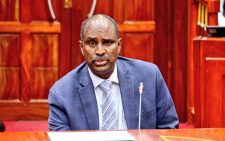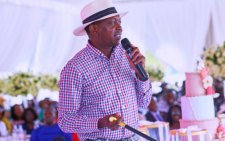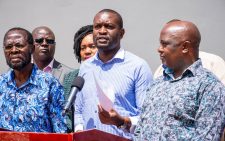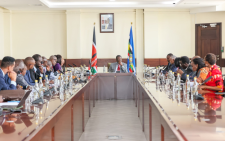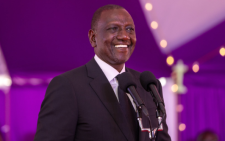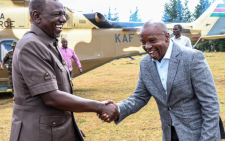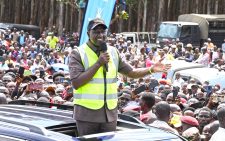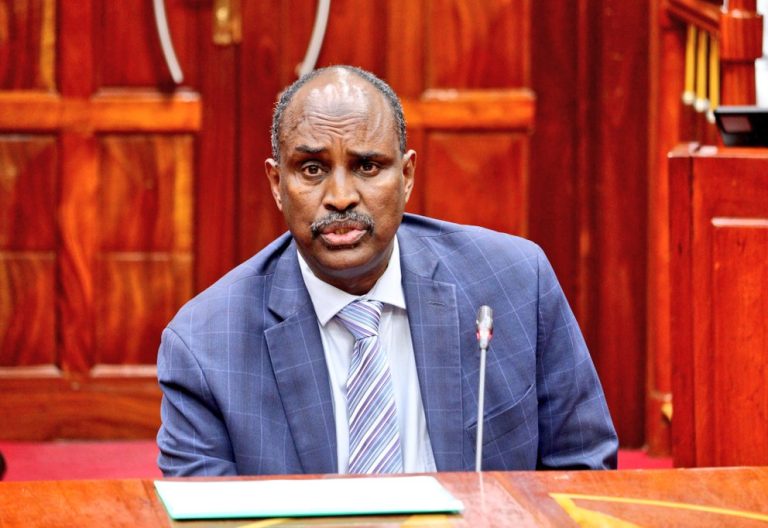Kibaki, Mboya link in struggle for freedom
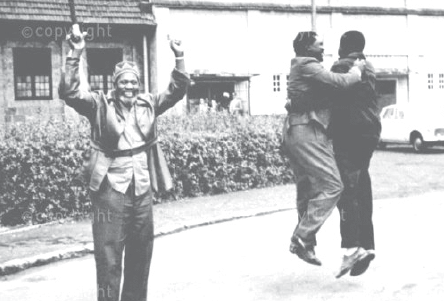
The famous picture of Mzee Jomo Kenyatta, Thomas Joseph “TJ” Mboya and Emilio Stanley Mwai Kibaki hugging and jumping for joy outside Kaloleni Social Hall in Nairobi vividly captures the euphoric mood that greeted Kanu’s victory in the 1963 General Election.
The image depicts a remarkable bond between two political figures credited with shaping Kenya’s socio-economic destiny dating back to independence and Kenyatta’s administration, a task that would be replicated nearly 40 years later when Kanu fell from power.
Mboya’s and Kibaki’s close link is testimony to the contrasting yet convergent confluence of two brilliant minds brought together by fate in a union whose political, social and economic ramifications continue to be felt to date.
Familiar memories
As a pupil of St John Primary School barely 50 metres away, Kaloleni Social Hall evokes uncannily familiar memories and emotions, no doubt triggered by treasured nostalgic narratives of native residents, many long departed, and moments spent in the library it housed.
Described as the theatre of Kenya’s ideological battle against colonial rule, Kaloleni Social Hall was Mboya’s perfect stage as he launched his crusade for the freedom of Africans subjected to the yoke of years of subjugation and oppression.
Suave in his meticulous manner of dress and speech, the youthful Mboya cut the image of a messianic figure as he powerfully addressed enthusiastic audiences. His trade union roots spiced with Pan African ideals blended to his associates, including Ghana’s legendary Kwame Nkrumah.
Despite his limited academic background, Mboya proved to be an erstwhile and charismatic advocate for the political and economic emancipation of Kenyans, articulately championing in literary platforms and international audiences.
A trusted aide of Jomo Kenyatta “the spear of the nation”, Mboya’s sterling efforts were amply complemented when political firebrand Jaramogi Oginga Odinga plucked brilliant scholar Kibaki from Makerere University, thrusting him into the furnace of independence politics.
Jaramogi and Kenyatta had become very close, joined in the struggle by many other freedom fighters including the Kapenguria Six who had been imprisoned by the British authorities for agitating against colonialism.
As executive officer of Kanu alongside Mboya the secretary-general, Kenyatta had two trusted minds to chaperone the final stages of the “war of liberation”.
With political activities banned by the colonial authorities, attention turned to social clubs and Kaloleni Social Hall became the centre of action, an ideal location for political activists.
Mboya lived in Kaloleni and one of his neighbours and close associates was Apollo Milton Obote, who would later become president of Uganda. Mboya occasionally invited Kenyatta, an eloquent speaker with his beaded cap and flywhisk popularised by Jaramogi to Kaloleni, attracting hundreds of enthusiastic followers.
In his book, The Nairobi General Strike (1950): From Protest to Insurgency,David Hyde writes about the “collapse of state authority against formidable opponents, where the Nairobi poor created their own alternative society in clandestine opposition, to the forces of law and order and to the colonial state. As a result, the government was reduced to impotence.”
Several years later after the Mau Mau uprising ended, Kibaki joined Mboya at Kaloleni, beginning an association that culminated in Kanu’s victory, leading to their appointment in the finance, economic planning and development docket of Kenyatta’s post-independence administration.
Before that, Kaloleni Social Hall had also become the venue of the launch of Mboya’s famous Airlift in the late 1950s to early 1960s, where nearly 1,000 Kenyan students were awarded scholarships to study in US universities.
Among the scholarship beneficiaries were the former Vive President George Saitoti, Nobel laureate Wangari Maathai, Barack Obama Sr and veteran journalist Philip Ochieng. All are now deceased.
Many of the Airlift graduates and Kibaki’s academic siblings from the citadel of learning in East Africa, Makerere, would become members of Kenyatta’s first Cabinet of 15 ministers and top government officials as well as managers in the private sector.
Kibaki was in 1963 appointed Treasury Permanent Secretary and later Assistant Finance minister and chair of the Economic Planning Commission; a position that he worked in closely with Mboya, the Economic Planning minister.
Together they steered the drafting of the ‘Sessional Paper No. 10 on African Socialism of 1965’, which however came under criticism from among others Barack Hussein Obama, who would later work with Kibaki and Mboya upon his return from the US.
ibaki was appointed Commerce and Industry minister in 1966 and became Finance minister until 1982.
Net output
The ‘Sessional Paper No 10’ ensured that the country’s wealth would remain in the productive areas, including the former White Highlands, aiming to grow the economy at a fast rate, with development funds invested where it would yield the largest increase in net output.
An approach that clearly favoured the development of areas endowed with natural resources, good land and rainfall, transport and power facilities. Areas without such facilities continued to lag behind.
While Kibaki had the chance to attempt redressing this anomaly as Kenyans critiqued the country’s constitutional, political and socio-economic order, Mboya sadly never did. His illustrious life career was brought to a sudden and cruel end by an assassin’s bullet at the young age of 38.
